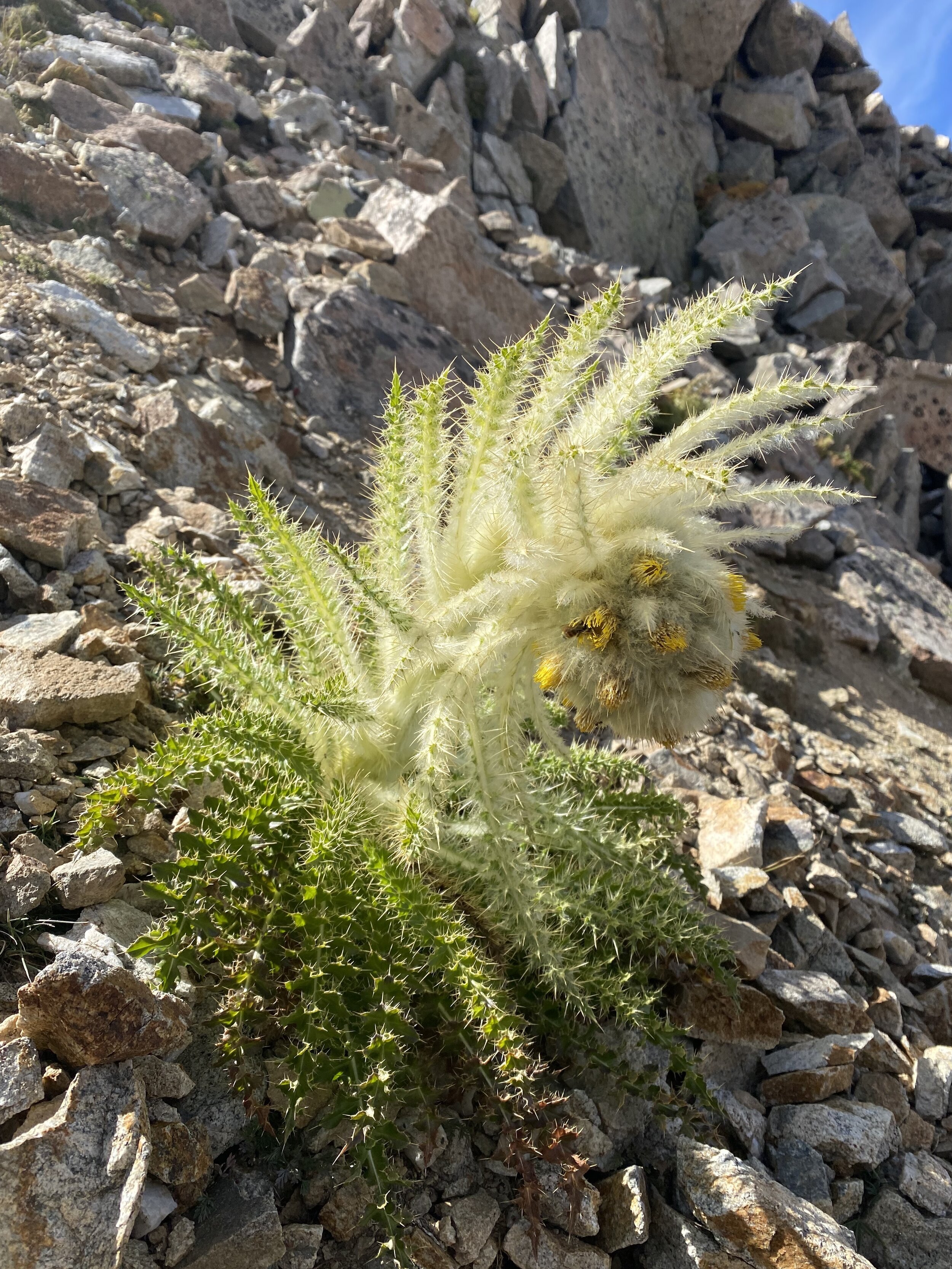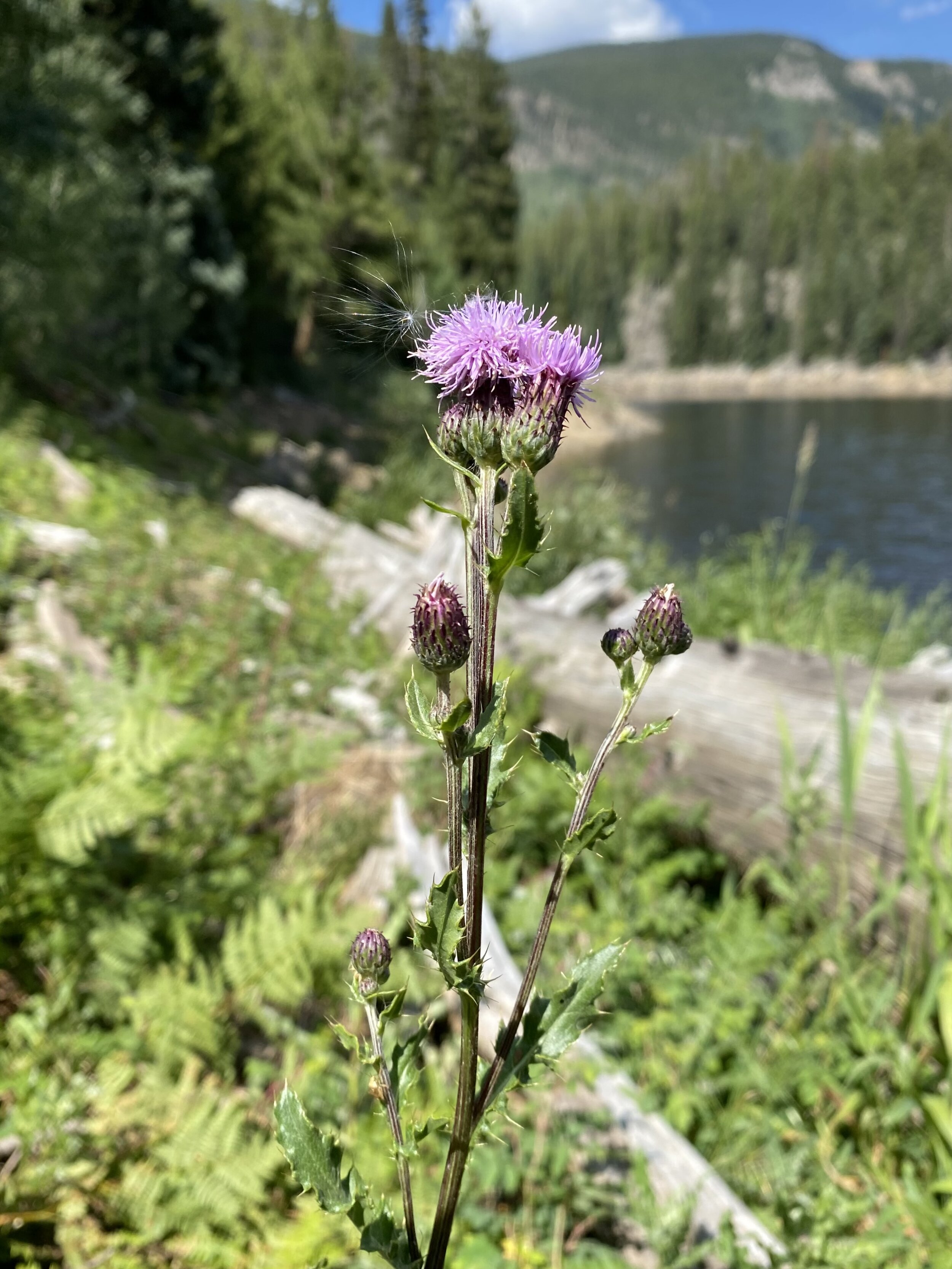Cirsium scopulorum, September 18, 2021
Common & scientific name
Mountain thistle, Cirsium scopulorum
Family
Sunflower, Asteraceae
Location
Mt. Hope, 12,800’
Fun, weird, helpful, or little known fact
These dramatic, 3-D, drooping native thistles (yes—not all thistles are “bad” non-natives!) have thorny edged leaves and flowers (disk florets only) cushioned by a downy mass of fine hair. You can be assured it’s a native species because you will never see it taking over a mountainside—it grows in balance with and amongst our several hundred other subalpine and alpine species of plants, and is loved by pollinators.























